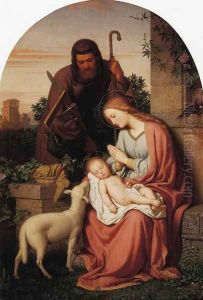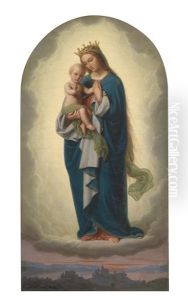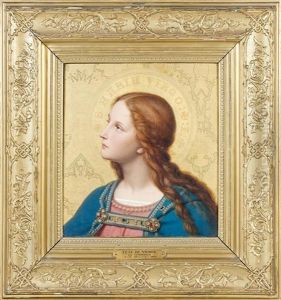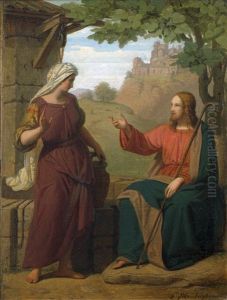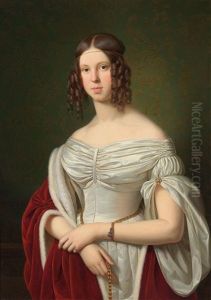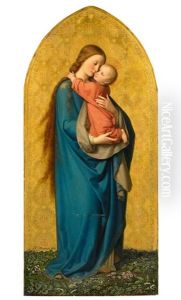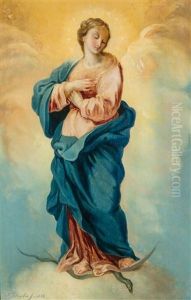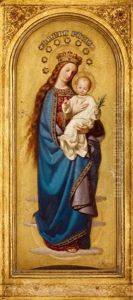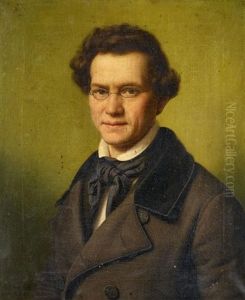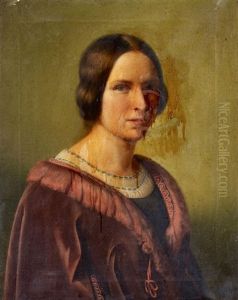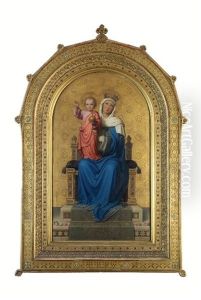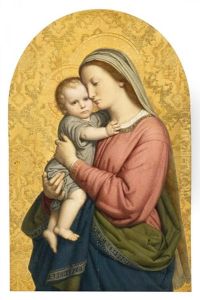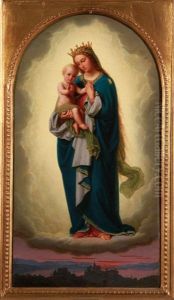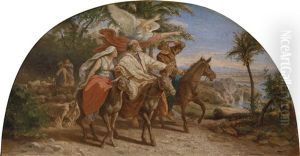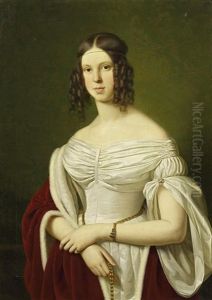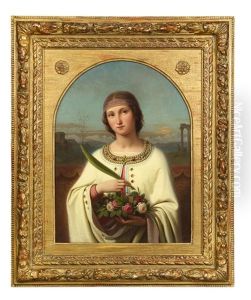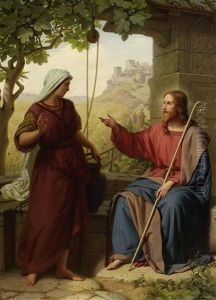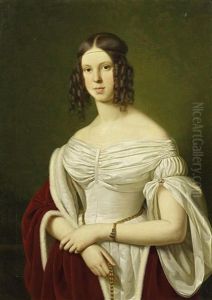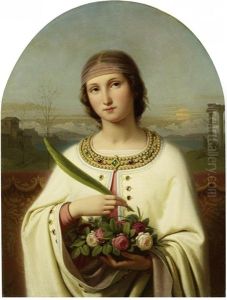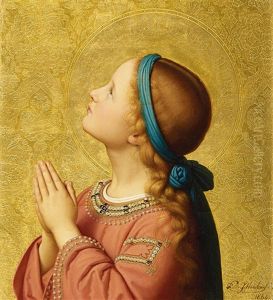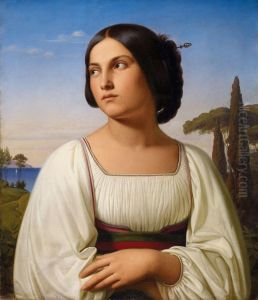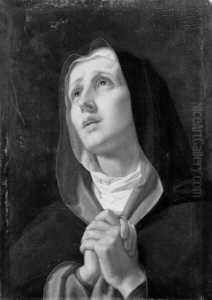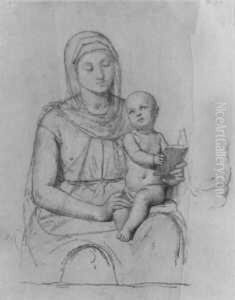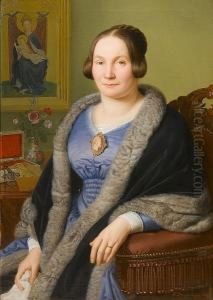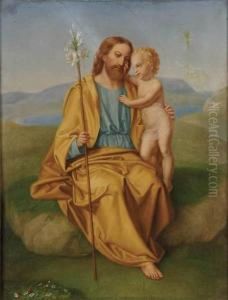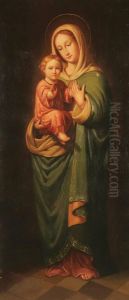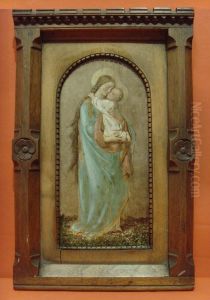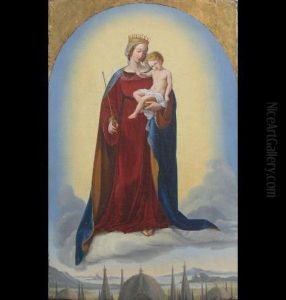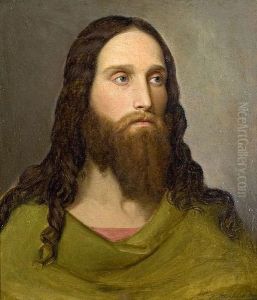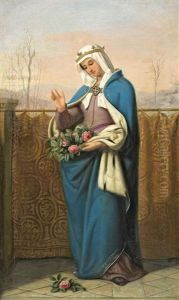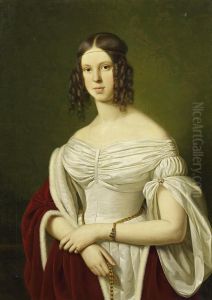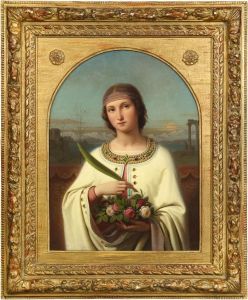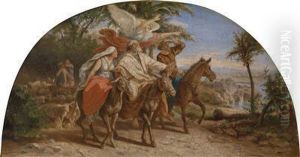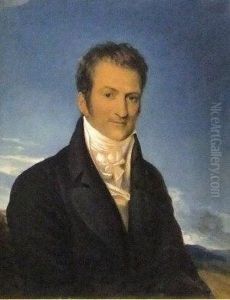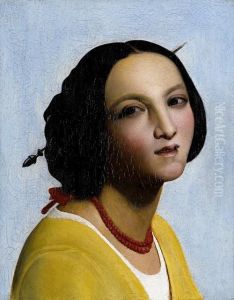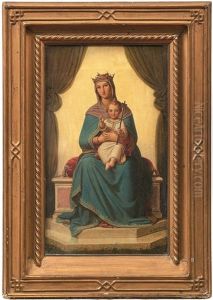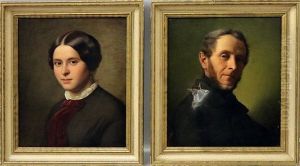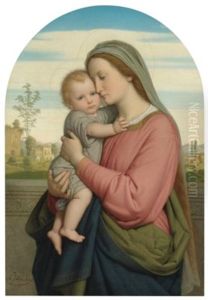Franz Ittenbach Paintings
Franz Ittenbach was a German painter who was born on April 18, 1813, in Königswinter, a small town on the Rhine near Bonn, Germany. His early life in the picturesque Rhineland and the devout Catholic environment in which he was raised had a profound influence on his artistic career and thematic choices. From a young age, Ittenbach demonstrated an exceptional talent for drawing and painting, prompting his family to support his artistic education. He initially studied at the Düsseldorf Academy, one of the premier art schools in Germany at the time, where he honed his skills and absorbed the influences of the Nazarene movement—a group of early 19th-century German Romantic painters who sought to revive honesty and spirituality in Christian art.
Ittenbach's work is characterized by its religious themes, often depicting scenes from the Bible, saints, and the life of Jesus Christ with a meticulous attention to detail and a profound sense of devotion. His style, while grounded in the traditions of the Nazarenes, evolved over time to incorporate elements of the Italian Renaissance, particularly the works of Raphael and Perugino, whom he admired greatly. This fusion of Romanticism and Renaissance influences gave Ittenbach's paintings a distinctive quality, combining emotional depth with technical precision.
In 1839, Ittenbach traveled to Italy, where he spent several years studying the masterworks of the Renaissance and refining his artistic vision. This period was crucial in the development of his style, as it allowed him to immerse himself in the art and culture that would shape his future work. Upon his return to Germany, Ittenbach established himself as a leading religious painter, receiving commissions from churches and religious institutions across the country. His reputation also led to numerous honors and awards, solidifying his status as one of the foremost artists of his generation.
Franz Ittenbach passed away on December 1, 1879, in Düsseldorf. Throughout his career, he remained committed to the ideals of the Nazarene movement, producing works that continue to be celebrated for their beauty, spirituality, and technical mastery. Today, Ittenbach's paintings are held in high regard and can be found in museums, galleries, and private collections around the world, serving as a testament to his enduring legacy in the history of art.
